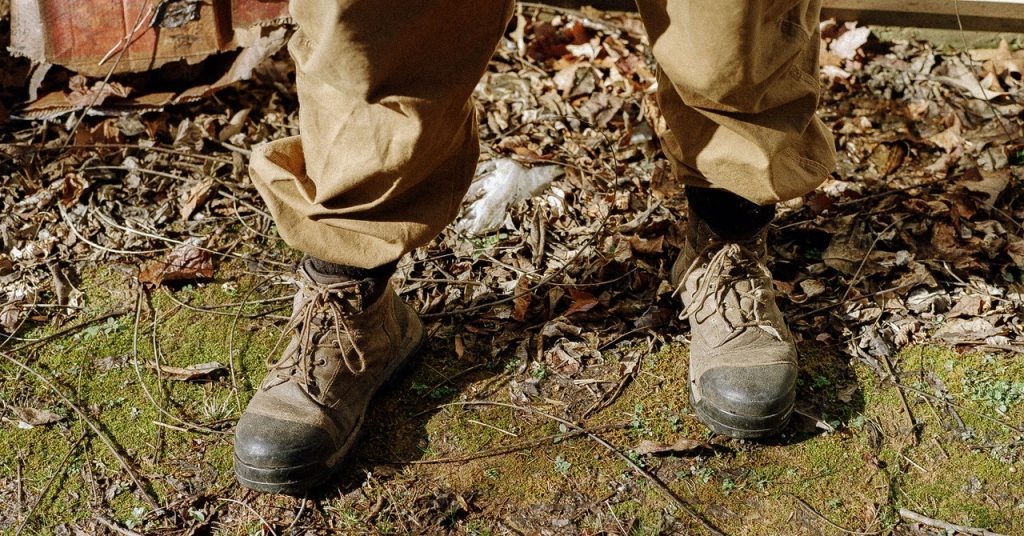
When you hunt the tree of heaven, you come to know it by its smell. A waft of creamy peanut butter leads you to a tall trunk, silvery and nubbled like cantaloupe rind, rising into a wide crown of papery pink seeds and slender leaves. To kill this tree, you cannot simply cut it down with a chainsaw. Ailanthus altissima is a hydra; it counters any assault by sealing off its wounds and sending up a horde of new shoots across its root system. Where you had one tree, now you have a grove of clones extending 25 feet all around you. No, the trick to killing this tree, Triston Kersenbrock explained, is to attack it “without alarming it,” so slowly that it does not even realize it’s dying.
Triston and I were standing in the shade of a tree of heaven in Pisgah National Forest, on the fringes of the Appalachian Mountains. We were with his crew of four AmeriCorps members, enjoying a respite from the hot North Carolina summer sun. To my unstudied eye, the tree looked like just another beautiful inhabitant of the ecosystem—and in its native East Asia, that’s what it would be. But here, the species grows so quickly that it takes over the forest canopy, stealing sunlight from the trees, shrubs, and grasses that live below. Its leaves are toxic; when they fall, they poison the soil and suppress the germination of any plant that tries to survive in its shadow.
The crew members, all in their early to mid-twenties, were on a mission to find and kill as many invasive plants as they could. They were outfitted with identical PPE—long pants and sleeves, turquoise nitrile gloves, safety glasses, and hard hats bearing the logo of their employer, American Conservation Experience, a nonprofit that coordinates environmental restoration work around the country. But each member of the ACE crew retained a personalized style: Triston was neatly ironed and tucked in, a carabiner tidily clipping his car keys to his belt loop. Eva Tillett had tied her pants up with a length of tattered white rope. Carly Coffman hung her safety glasses from a cheerful rainbow-colored strap. Lucas Durham had threaded earbuds through his shirt and under the straps of his helmet so he could listen to jams while he worked.
To kill the tree, the ACErs would use a technique known as hack-and-squirt. Triston held up a hatchet. “Would you like the honors?” he asked me. I felt a pang. I steadied myself and cut 10 shallow notches into the trunk—minor enough wounds, we hoped, that the tree wouldn’t go into hydra mode. The bark curled off like half-peeled scabs. Eva passed me a squirt bottle full of bright blue liquid containing Triclopyr, an herbicide. “Spritz it, yo!” Lucas said. I spritzed. The liquid filled each wound and dripped down like alien blood.
Hack-and-squirt allows the Triclopyr to stealthily infiltrate the tree’s vascular system. The tree, oblivious, carries the poison to its roots, where the chemical mimics one of its own growth hormones and forces its cells to divide themselves to death. Like something out of a Greek myth, the punishment parallels the crime.
Every year, invasive species claim millions of acres of land in the United States.
Our work on the big tree took just a few minutes. Then the crew fanned out and went after its offspring. The saplings were too young to have bark, so instead of notching them we shaved a bit of stem off with our hatchet blades and dabbed herbicide into the scrape like antiseptic on a skinned knee. Triston found a sapling that another crew had already tried to kill. It had been cut down to a few knotty stumps, but a bundle of tenacious shoots was erupting out of it. “It doesn’t want to die,” Triston said. We unceremoniously skinned and squirted it. Maybe this time the herbicide would take.
Almost 20 years ago, around when American Conservation Experience was founded, the US Forest Service estimated that invasive plants covered 133 million acres in the country, an area as big as California and New York combined. Every year since then, they have claimed millions of additional acres in the United States, incurring billions of dollars in crop losses and land management costs and introducing numerous new pathogens and pests. (The tree of heaven, for example, is the primary reproductive host for the infamous spotted lanternfly, which managed to infest New York City within two years of appearing there.)
At a time when Earth’s ecosystems are under constant assault from habitat destruction and climate change, invasive plants present a uniquely unsettling global threat. Like Triclopyr, they kill silently and slowly. First they choke out native flora, which means some native herbivores and pollinators start to go hungry, which means some native carnivores do too. Eventually, those species may depart or die out, draining the landscape of biodiversity. The rich, layered variety of the ecosystem gives way to a bland monoculture. Some evolutionary biologists warn of a dawning Homogocene, an era in which invasive species become increasingly dominant—and uniform—across the globe.

